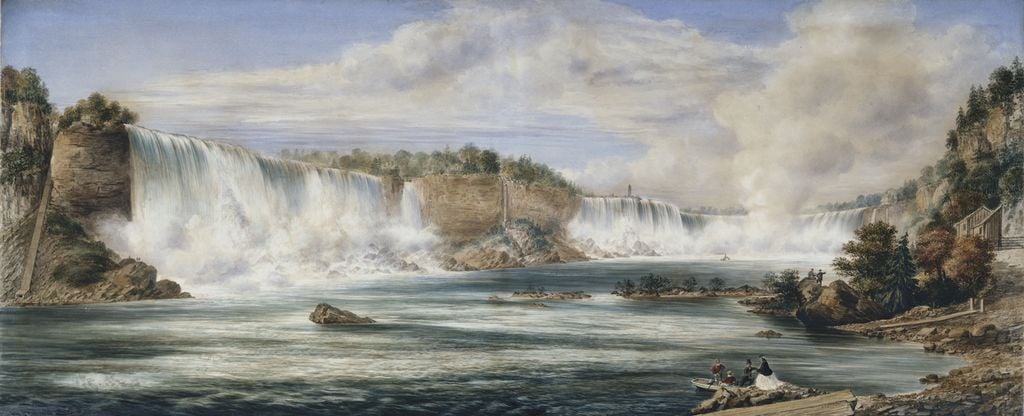
Canada
Explore The Royal Family's close relationship with the region, as well as the diverse artistic traditions represented in the Royal Collection
Narrative of the Canadian Red River exploring expedition of 1857 and of the Assinniboine and Saskatchewan exploring expedition of 1858. Vol. I.
1860RCIN 1141898
Métis, a people of mixed Indigenous and European heritage, are one of Canada’s major Indigenous groups, alongside First Nations and Inuit. This book by the geographer, Henry Youle Hind, describes an expedition to survey communication links between Canada and the Red River Settlement, a predominantly Métis colony in the present day province of Manitoba.
The account describes an encounter at the Ojibwe settlement on Garden Island in 1857, in which the expedition was told by the chief of the tribe to leave the area as they had heard about ‘how the Indians are treated far away. The white man comes… [and] the lands of the Indians pass from their hands, and they have nowhere a home… we do not want the white man.’ In response, Hind and his men returned to traditional routes followed by voyageurs and other fur traders. However, surveys of this kind continued, opening up huge swathes of land for colonial expansion. This was strongly resisted by Indigenous groups, particularly the Métis, who, led by Louis Riel, successfully petitioned for Manitoba’s entry into Confederation in 1870 in the hopes of confirming their land rights.
Métis rights were not included in the ‘numbered treaties’ and, in 1885, a Métis uprising in Saskatchewan, led by Riel and supported by some of the Cree and Assiniboine First Nations, was put down by federal forces. After a century of struggle, Métis were finally recognised as an Indigenous people of Canada in 1982.







